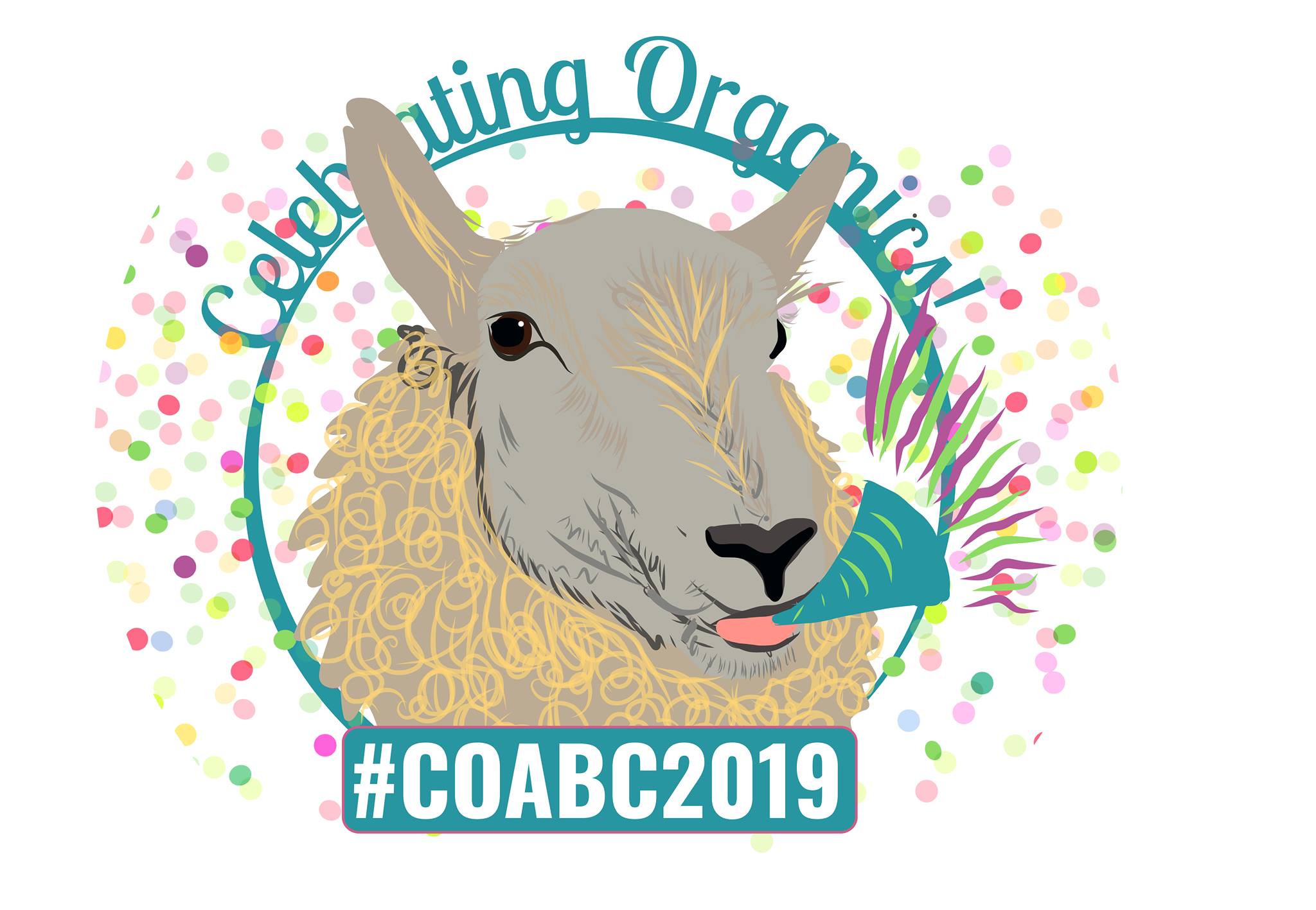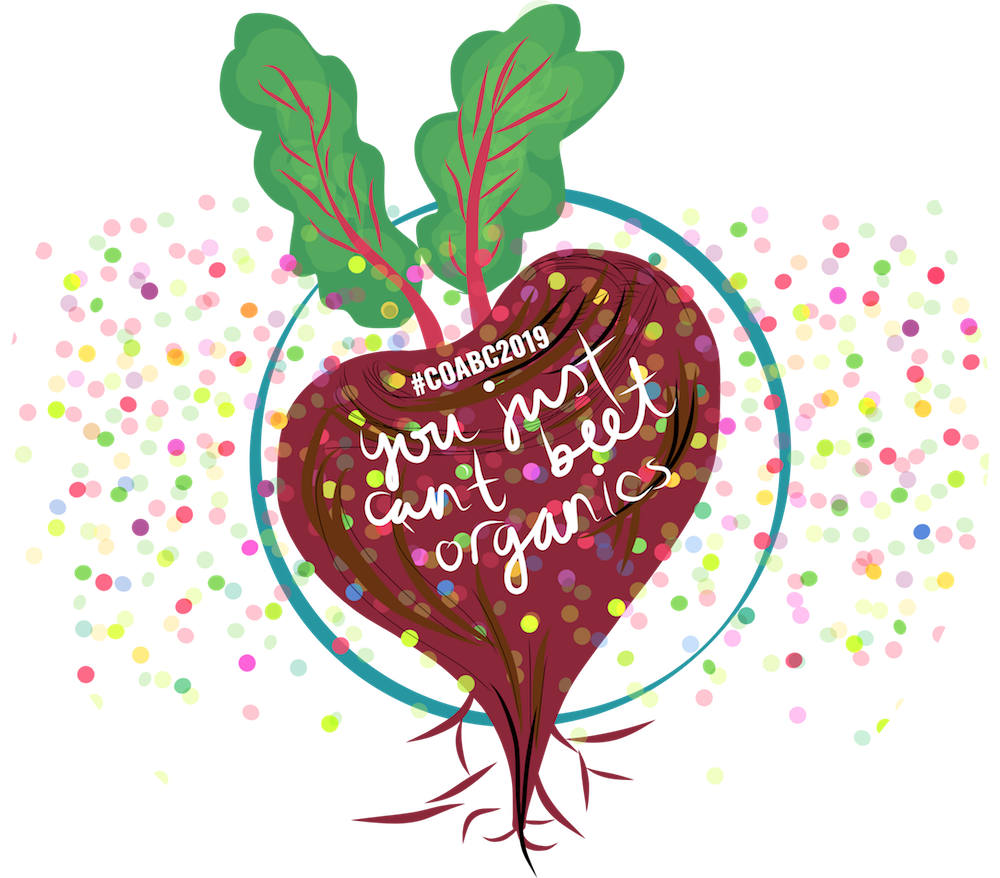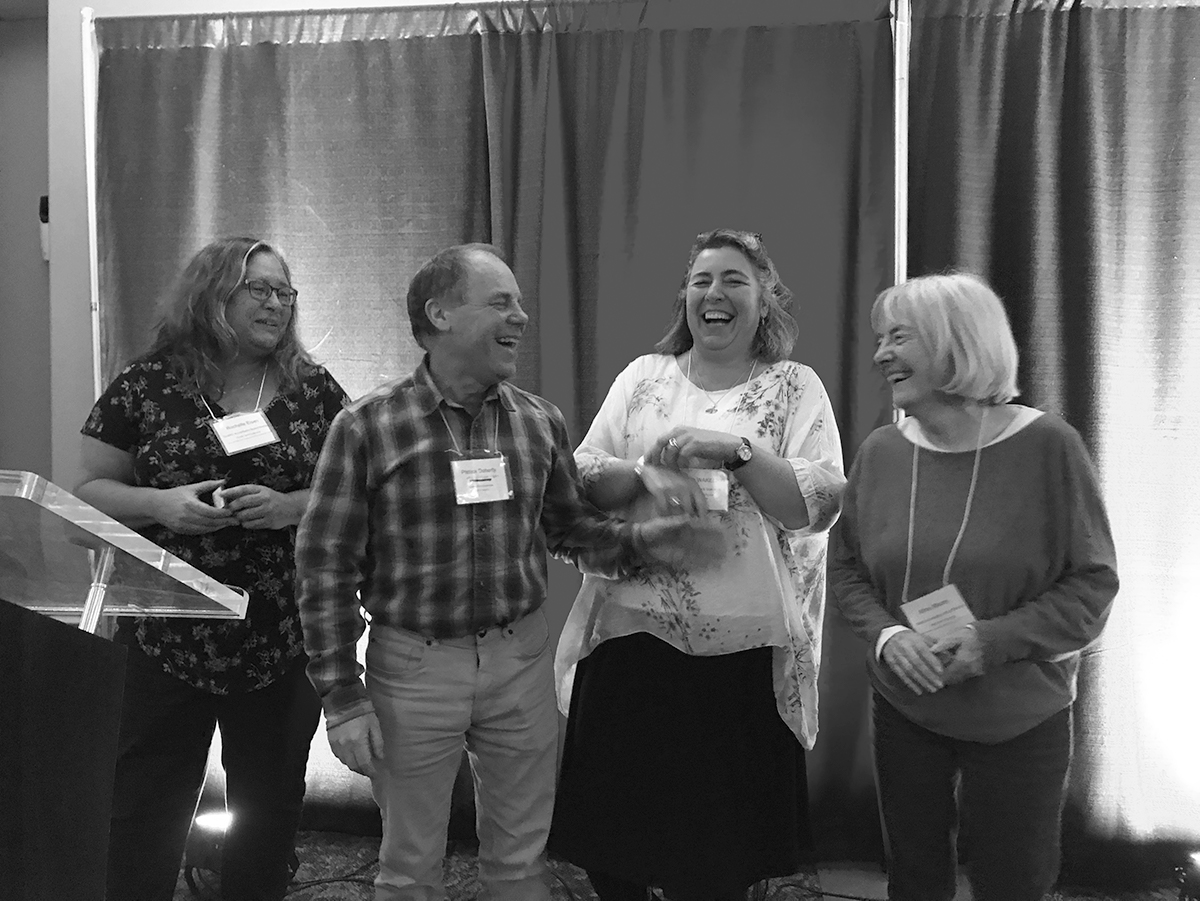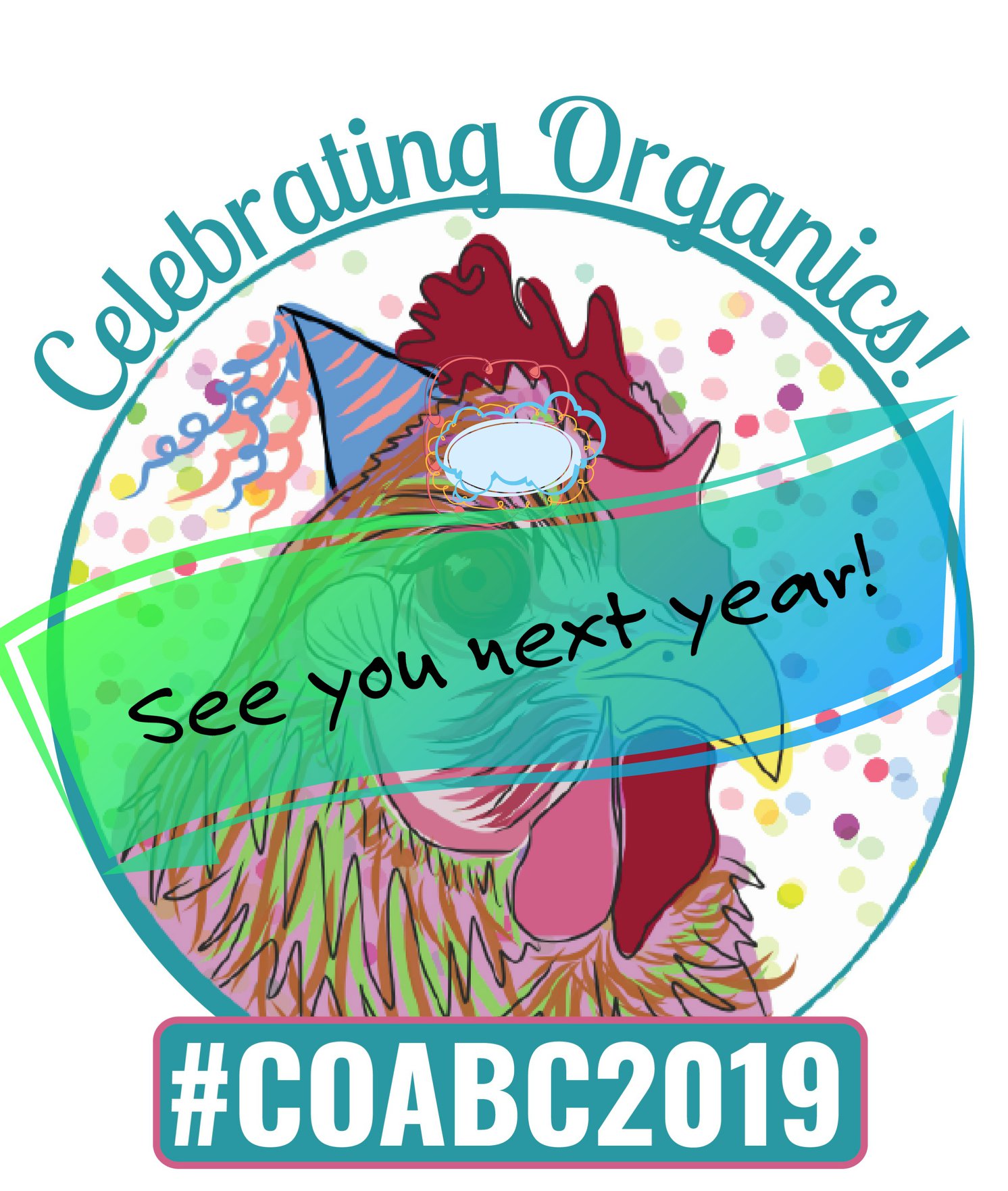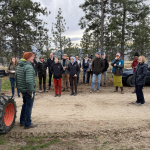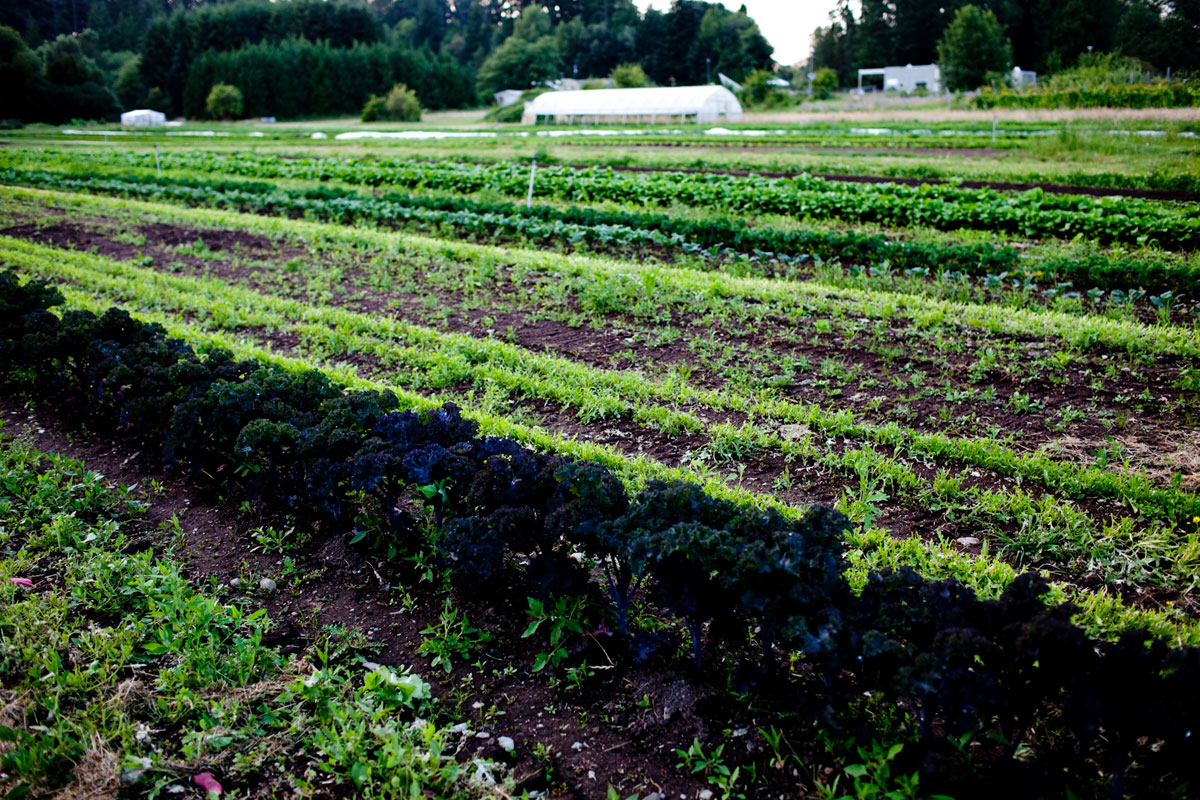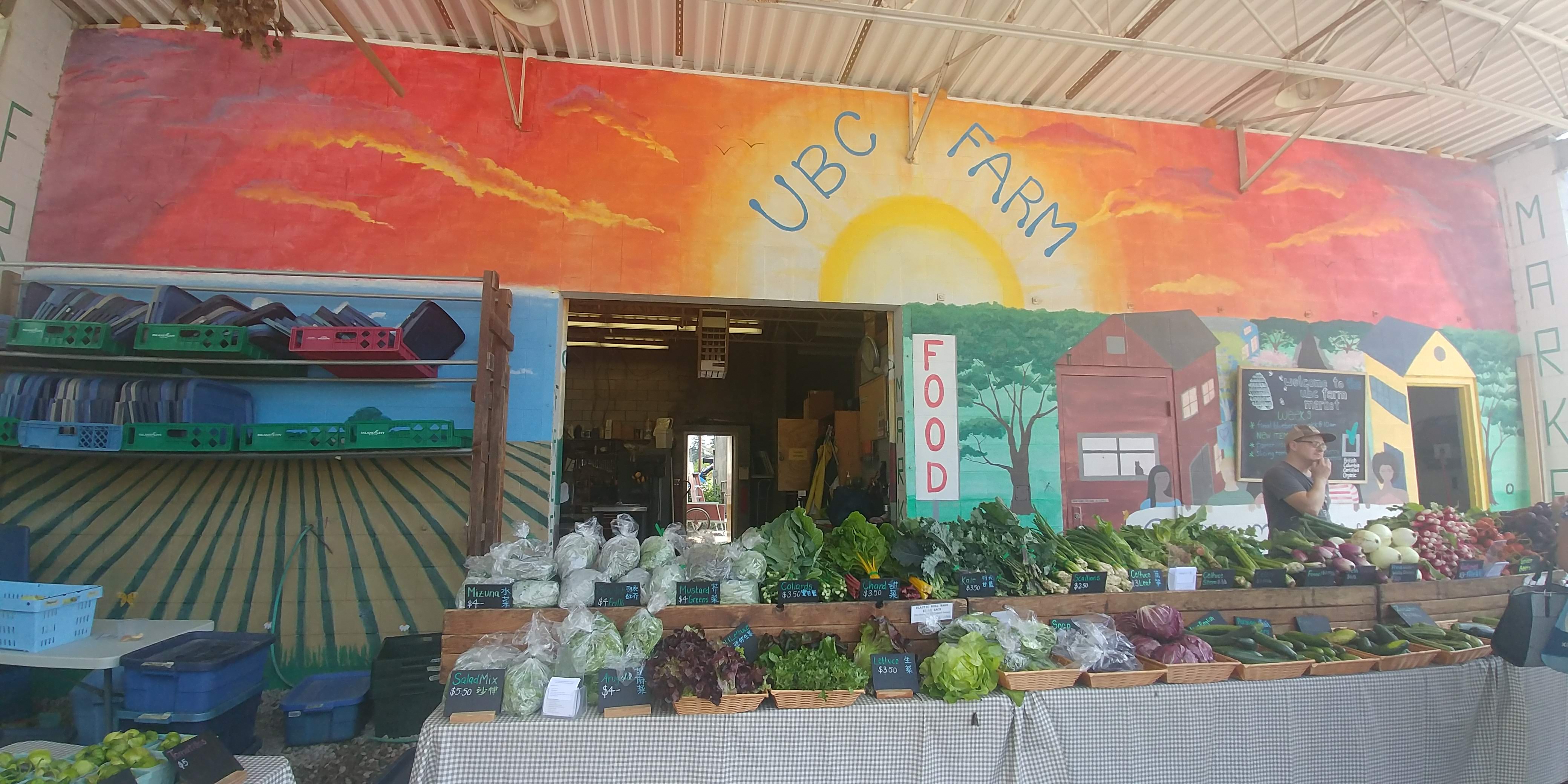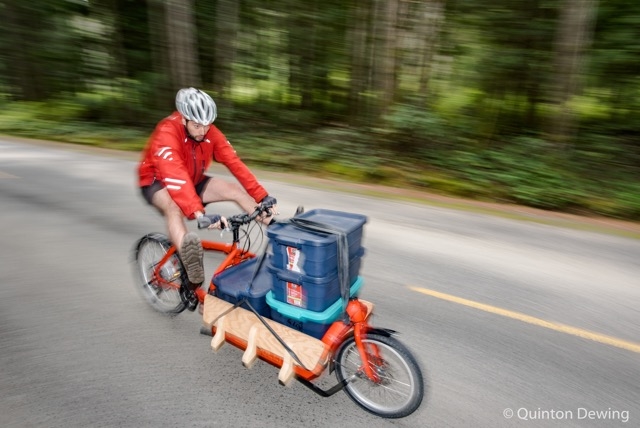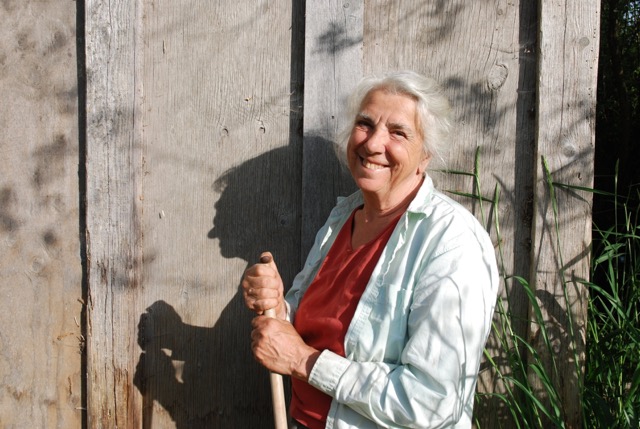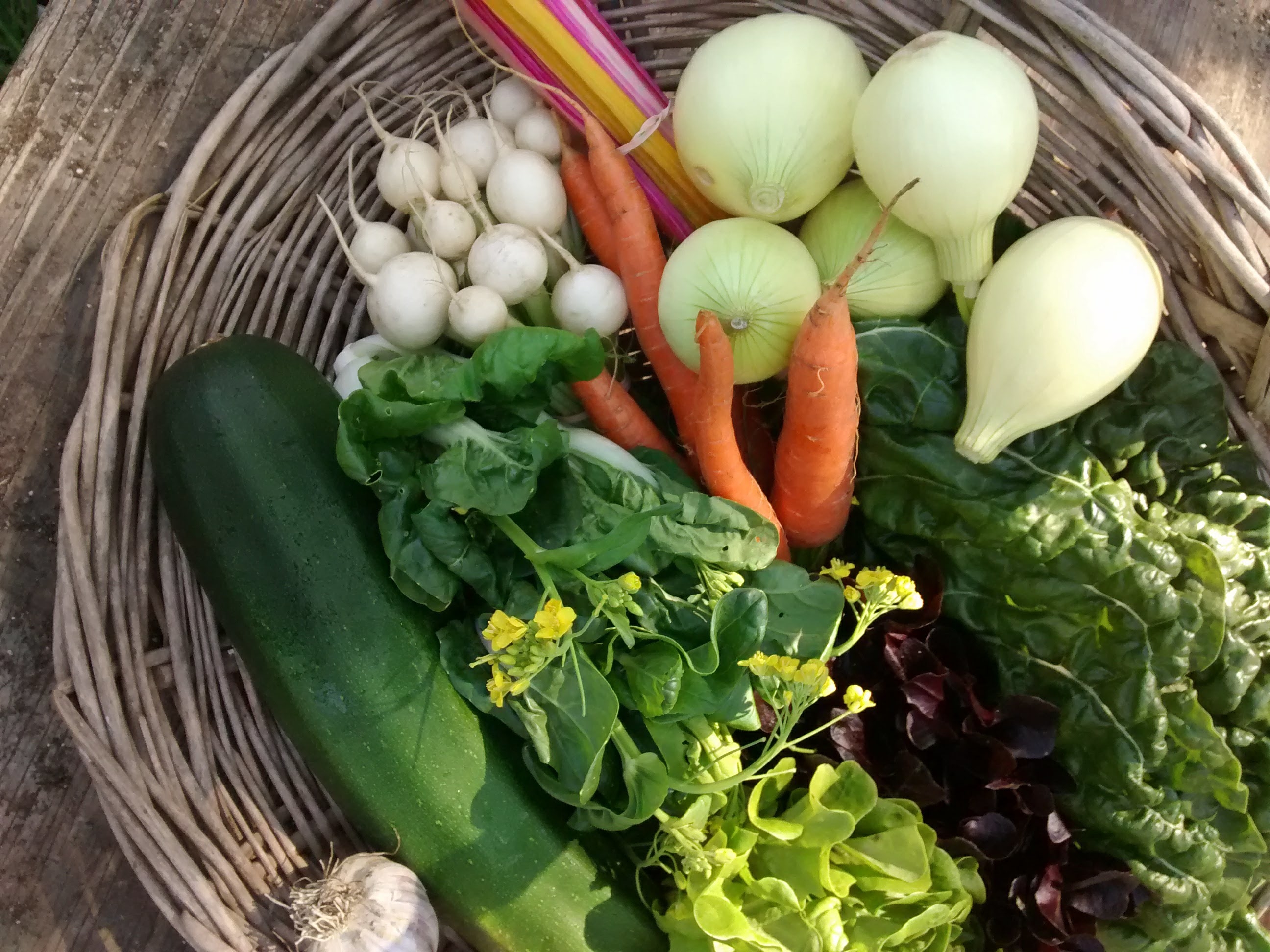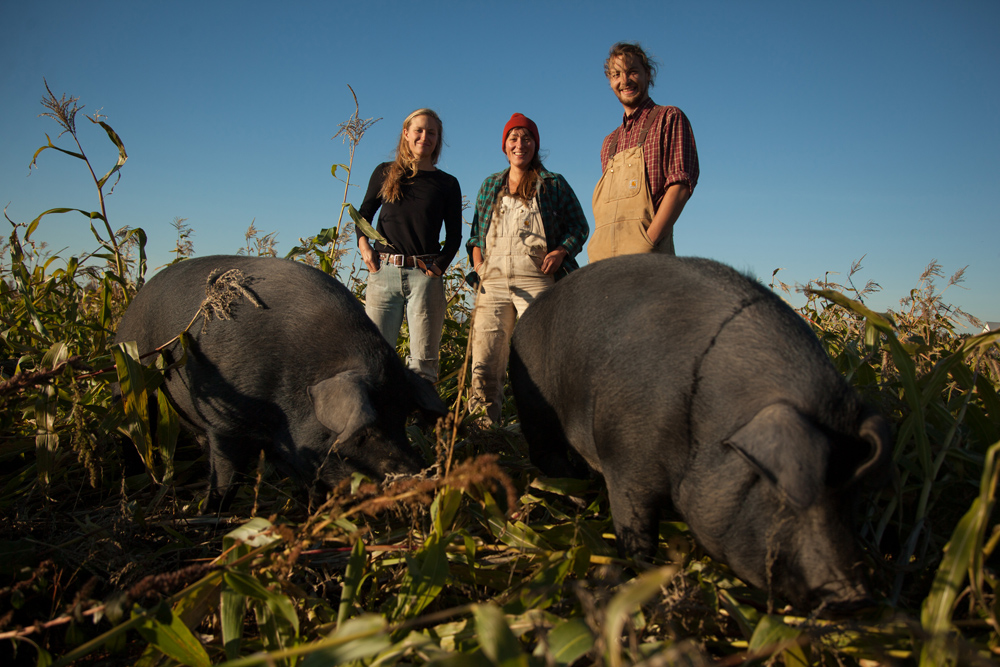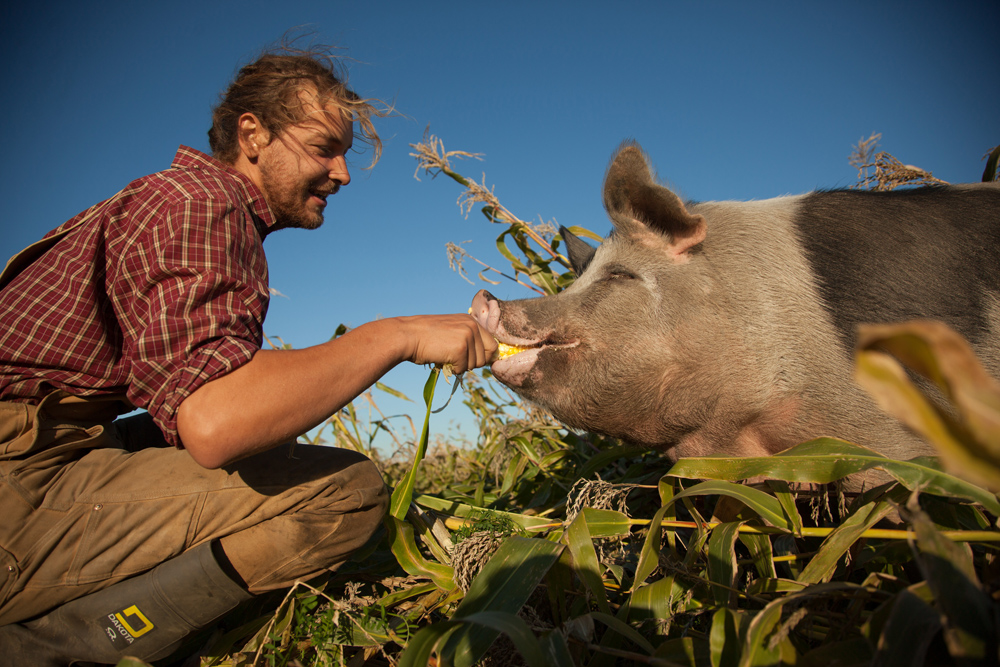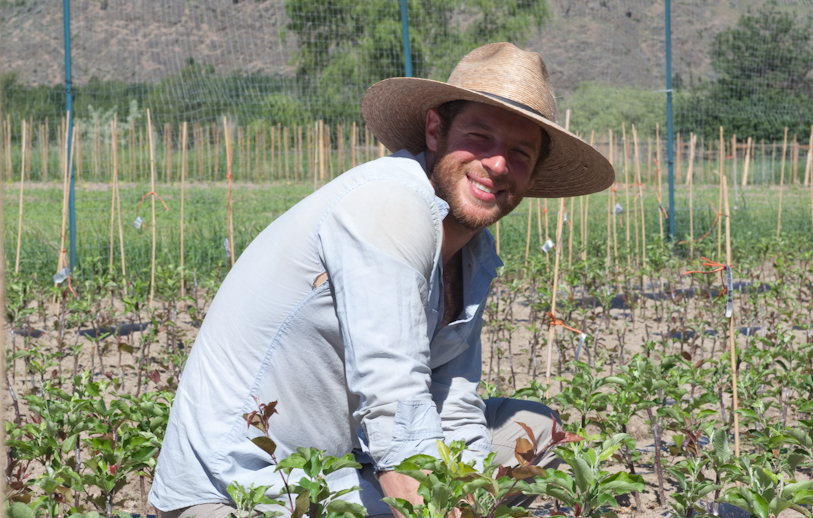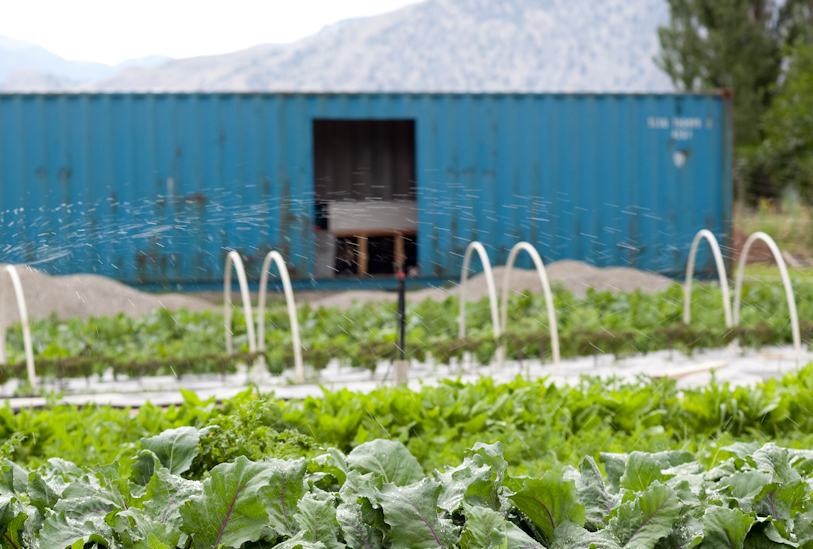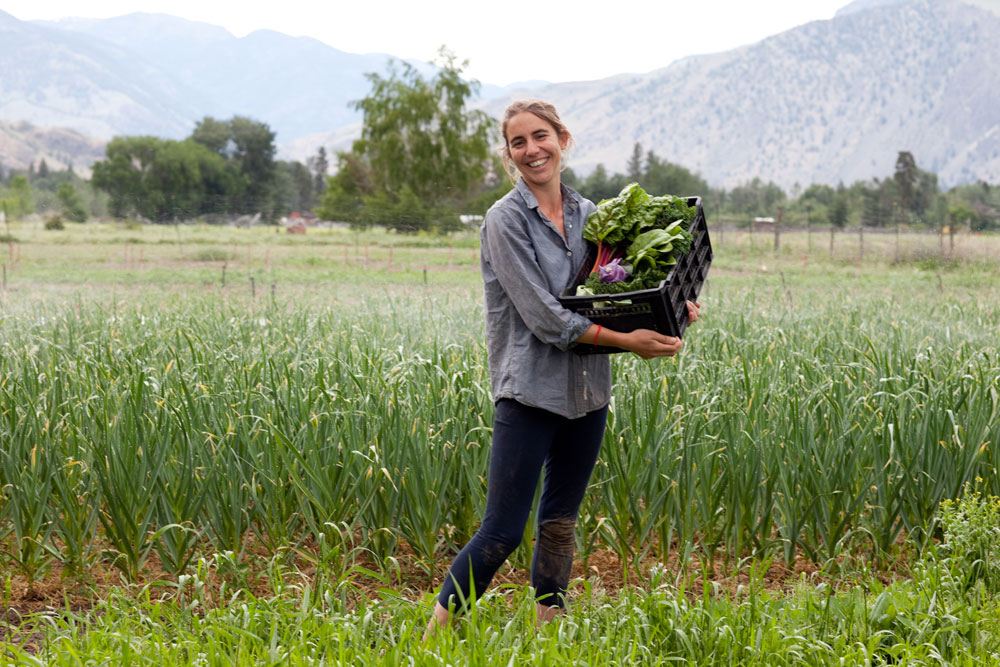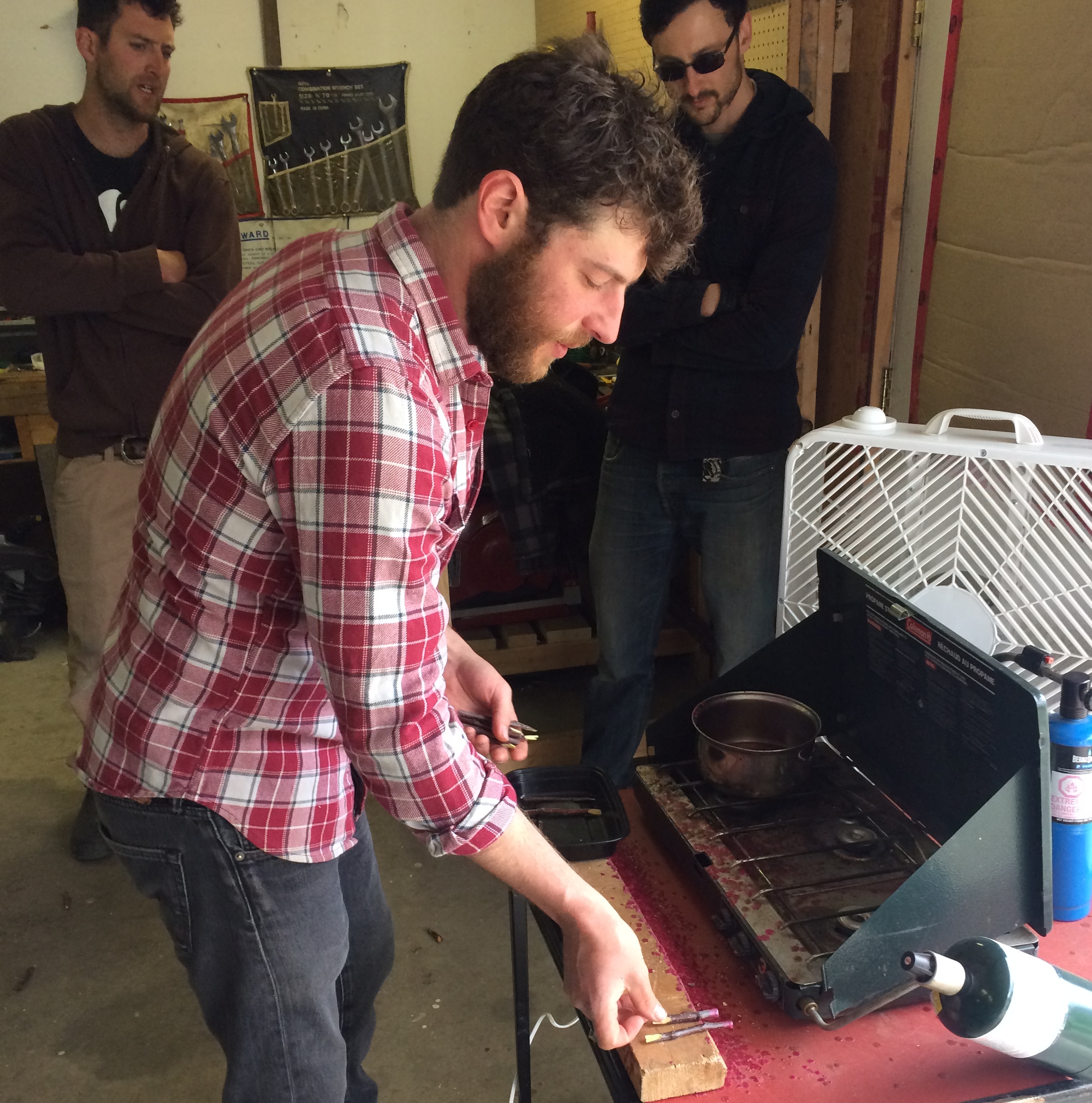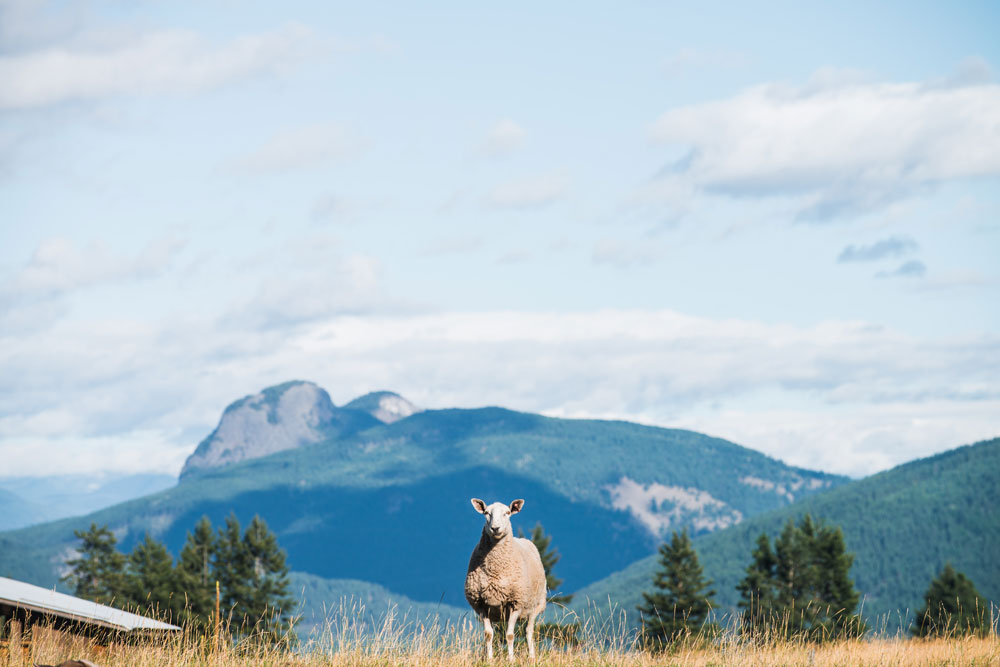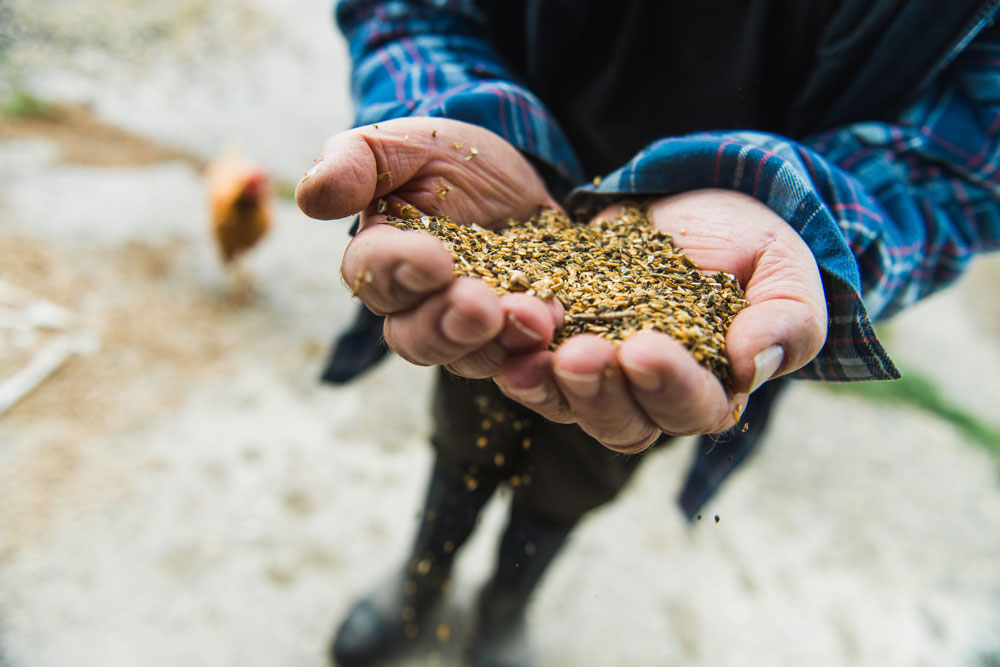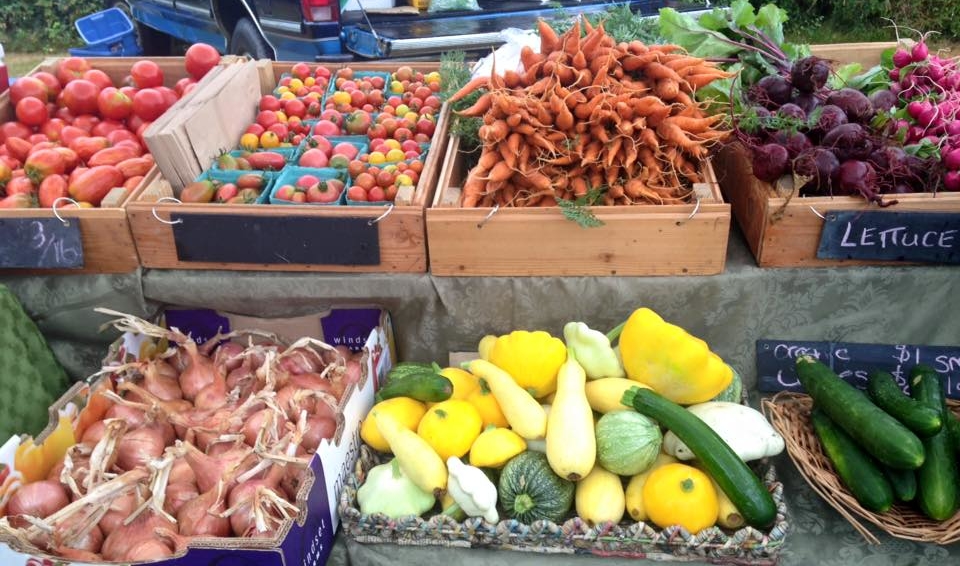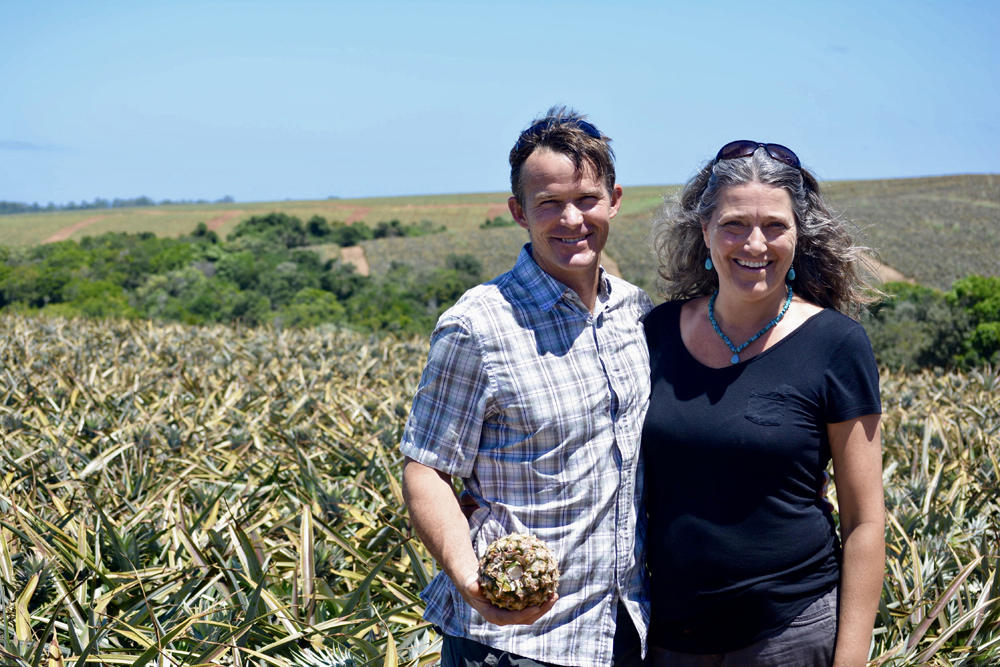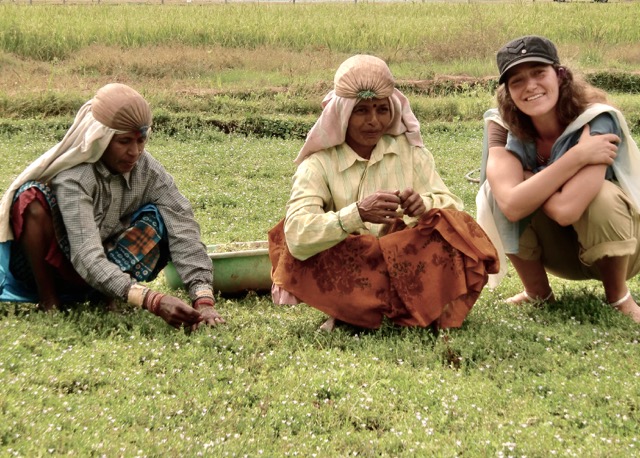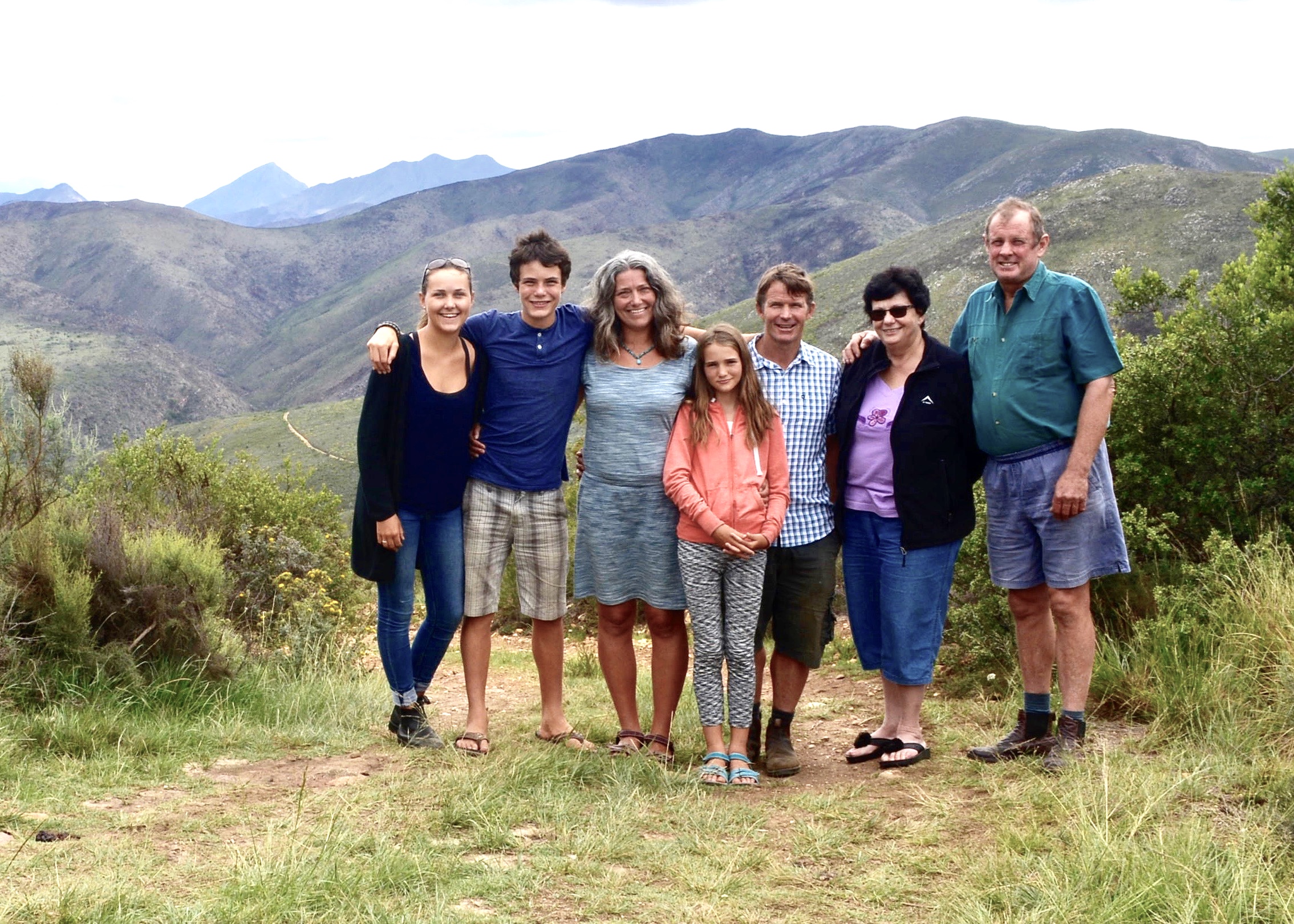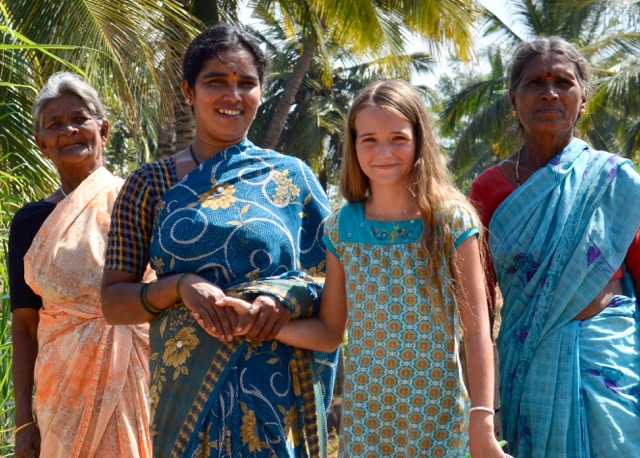Organic Stories: Sproule & Sons Farm, Oyama, BC
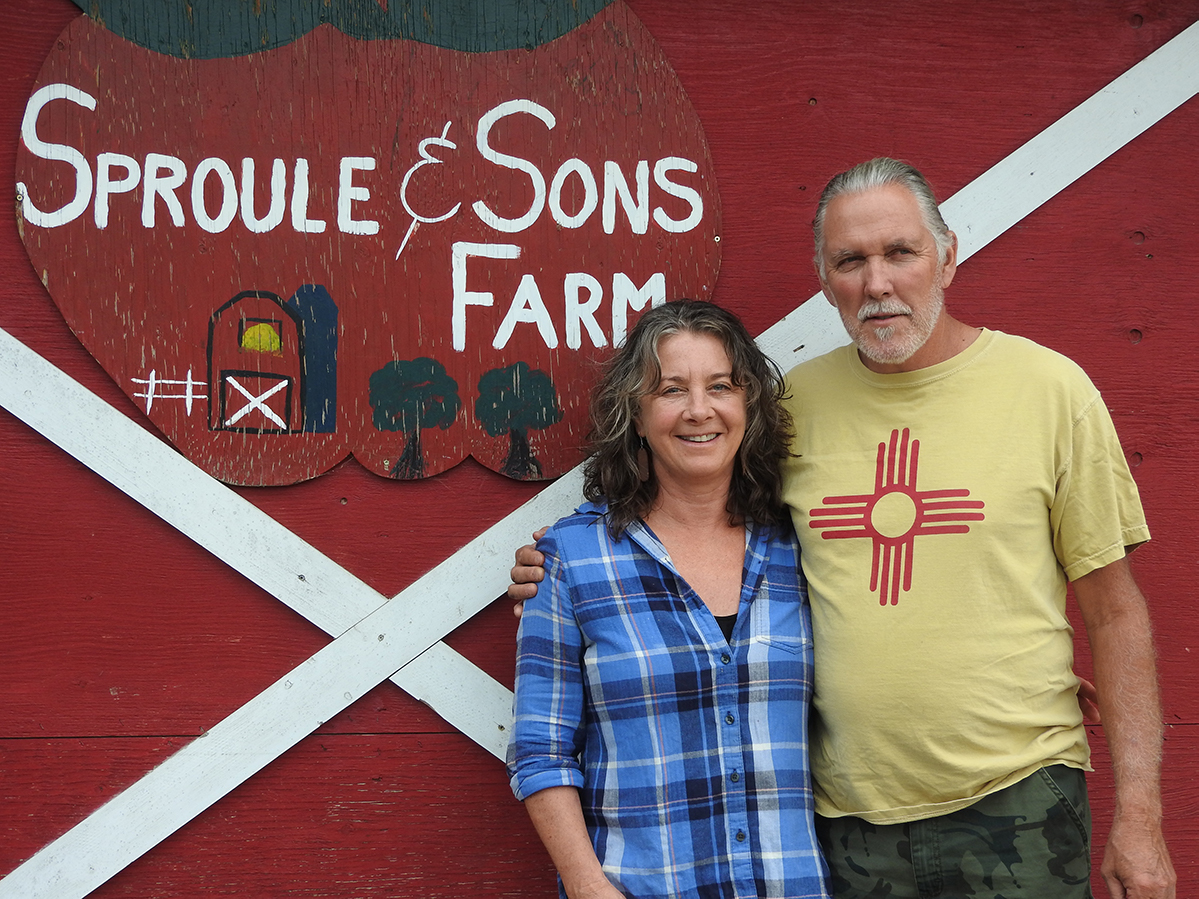
Sproule & Sons Farm: Past to Present
Neil and Jacqui Sproule with gratitude to Marjorie Harris
Garnet and Charlotte Sproule bought a raw piece of land in Oyama in 1946. They built a small shack and started planting a few fruit trees. They also started their family, which eventually grew to five children, all raised and educated in Oyama. They farmed the land until 1992 when it was time to retire. Their eldest son Neil and wife Jacqui then purchased the farm and raised their five children on the farm, continuing in the family tradition! They still live in the same old farm house (and have been renovating for 25 years).
Towards Organic
The fruit was farmed conventionally from 1946 to 1992. Neil and Jacqui had concerns about the pesticides and the glyphosate used to kill all the grass and bugs around the trees. When Neil sprayed the farm, clothes had to come off the line, all the windows had to be shut, and the children could not play outside. It was at that moment that Neil and Jacqui decided to convert to organic—with no support from family or neighbour farmers at the time. They had always respected the environment and the land on which they farmed, but going one step further to become certified organic was a way to affirm their commitment protecting the health of the land, air, water, animals, wildlife and people.
In the beginning some mistakes were made—low yielding crops, small fruit, insect damage—but they had beautiful green grass, open windows, and happy, playful children. Neil and Jacqui knew they were on the right path. They grew with knowledge through mentors and a hired consultant and in a few short years they were producing high quality organic fruit. As they became more confident in their farming practises, they rented neighbouring land and replanted.
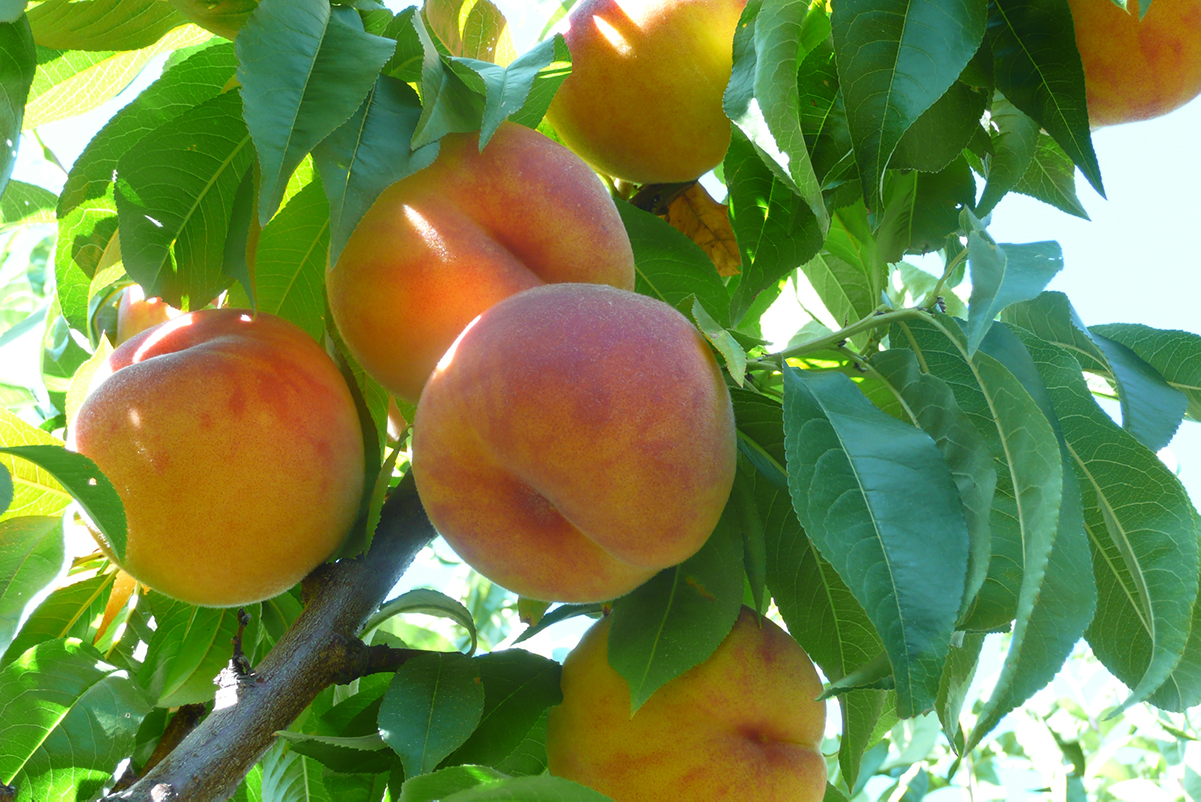
Today, they farm 22 acres of cherries, peaches, nectarines, plums, apricots, grapes, and apples—all organically, of course. It has been a learning curve for the owners of the property that the Sproules lease for their orchards, as the landowners must also comply with organic practices. As it turns out, the owners of the leased land quickly learned that the lack of pesticides made their environment much more livable and they all have found that the benefits of organic land far outweigh the weeds on their lawn.
Seasonal Flow
Tree fruits by nature have a unique seasonal flow. Every winter, the Sproules haul manure to the farm to kick start the composting process. The compost pile heats up to 130-140 degrees for several days, and decomposing is finished in six weeks, ready to return nutrients to the earth. Come spring, Neil spreads the composted manure under the trees.
Beginning in the early spring just before the blossoms open, bees are brought to the farm in hives. Once the blossoms are open and the temperature is up, the bees get busy pollinating all the fruit trees. Each type of fruit blossom smells different! Summer brings the bounty of harvest season.
Pruning is done between October and March, to invigorate the trees and allow light for bud and fruit development for the following season. After the pruning is completed all the branches are mulched up to be put back into the soil.
Self-Sufficient from Tree to Market
As they produced more and more fruit, the Sproules needed somewhere to store it all. They built a red barn, which has become a key part of their marketing strategy, and took the unique step of doing their own fruit packing, sorting and grading right on site, so all of their fruit goes directly from the trees to the cooler.
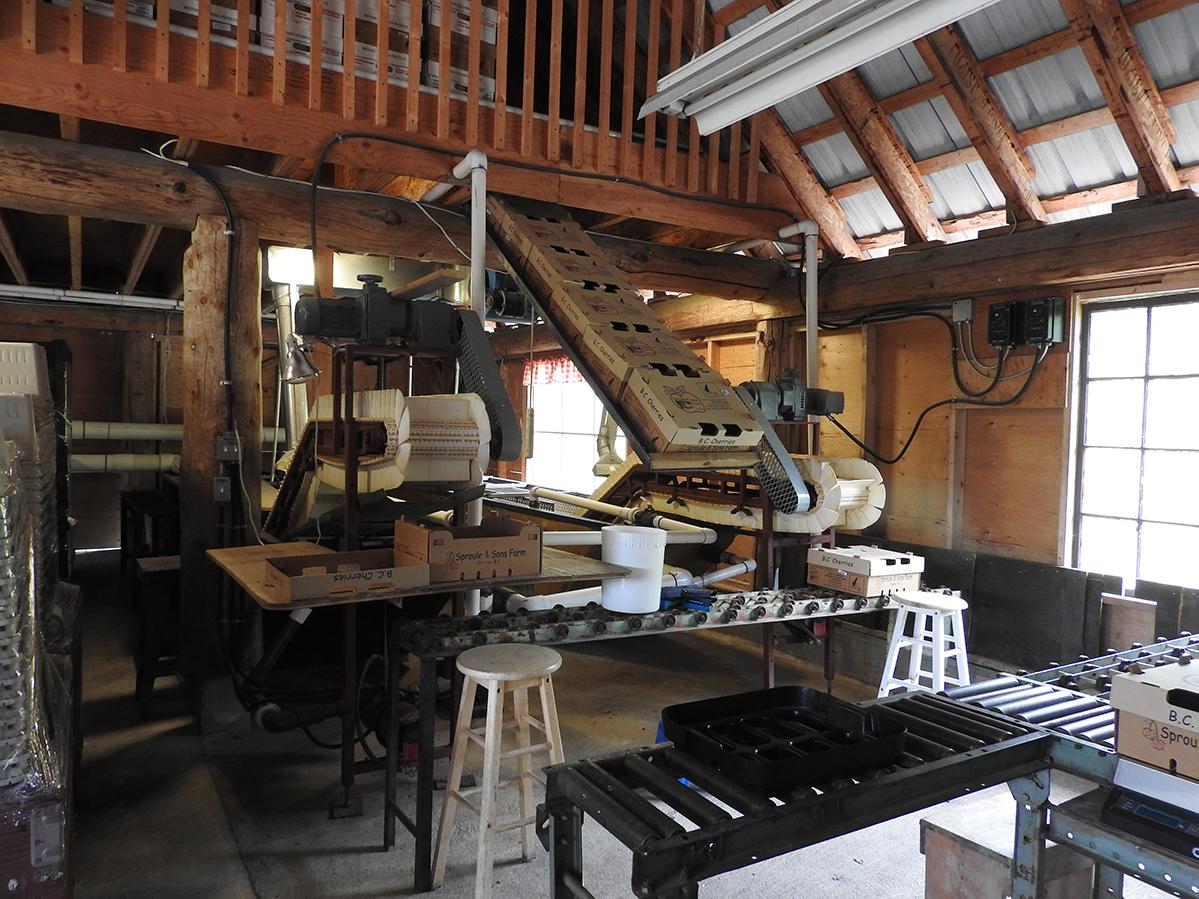
They bought a second hand hydro cooling system and a sorting table for the cherries, cold storage for the fruit and a commercial kitchen to cut and freeze peaches. The hydro cooler packs approximately 5,000 cherries per day with a staff of 50 people to pick and sort the cherries.
They have also built accommodation for the staff on the home property, with two fully equipped kitchens, hot showers, flush toilets, BBQ, WIFI, washing machine, tenting area and ping pong table and bikes. The workers pay a fee of $5.00 per day which is re-invested into the camp.
Every other year they hire a mobile juicing business to come in and juice the second-grade cherries. The juice is packaged in glass jars and sold on farm or farmers markets. The Sproule’s farm website is updated daily during the growing season so the community can find out what is being harvested. Over the years, the farm has hosted tours to showcase the sustainability practices and, of course, show off that red barn!
A Family Farm—Now and in the Future
In 2018, the Sproules received the Family Farm Award from the BC Institute of Agrologist’s Okanagan Branch for their multi-generational operation and excellence through organic agriculture. The award recognizes a family-oriented farm in the Okanagan Valley that demonstrates innovative practices as well as implementation of outstanding environmental values.
In a growing corporate farming sector, the Sproules are proud to have maintained a small family run organic farm—and are prouder still to announce that their eldest daughter Brooke with her husband Tanner and baby Hadley will be purchasing the farm in the next five years.
A third generation family farm—now that is progress!
Neil and Jacqui Sproule farm at Sproule & Sons Family Farm. Just look for the red barn!






